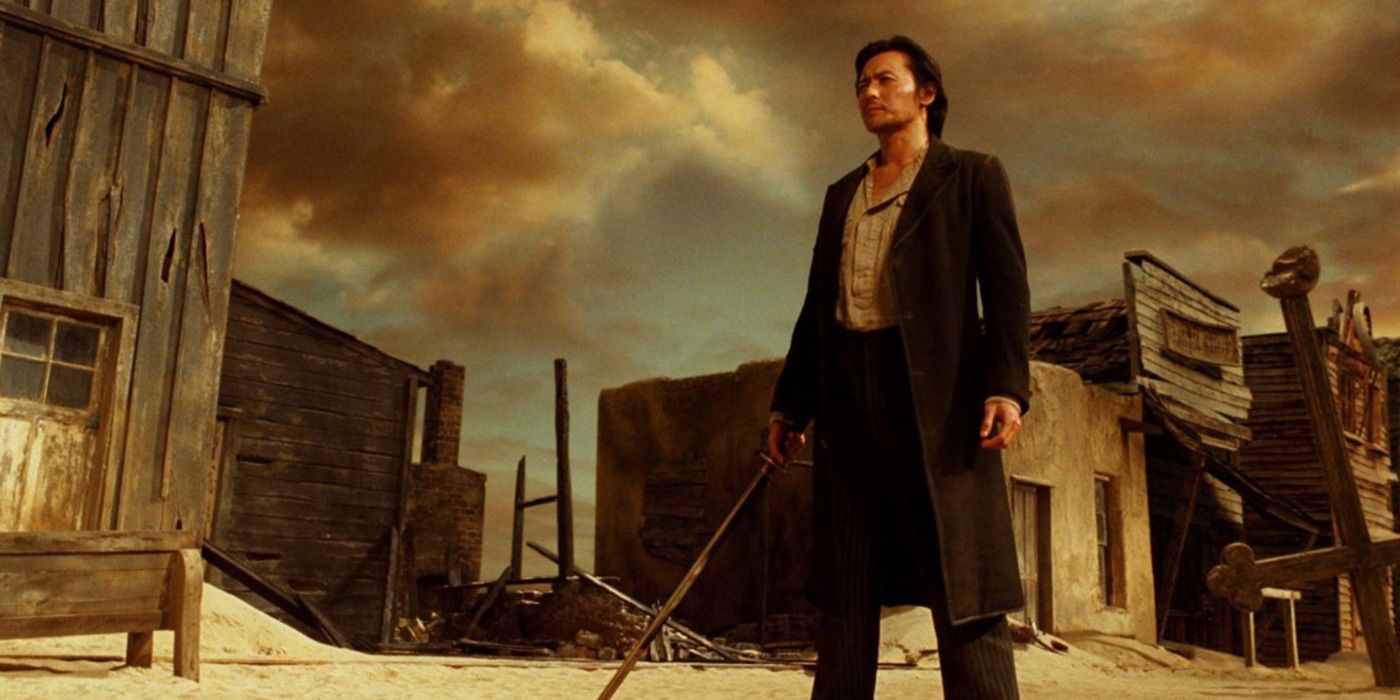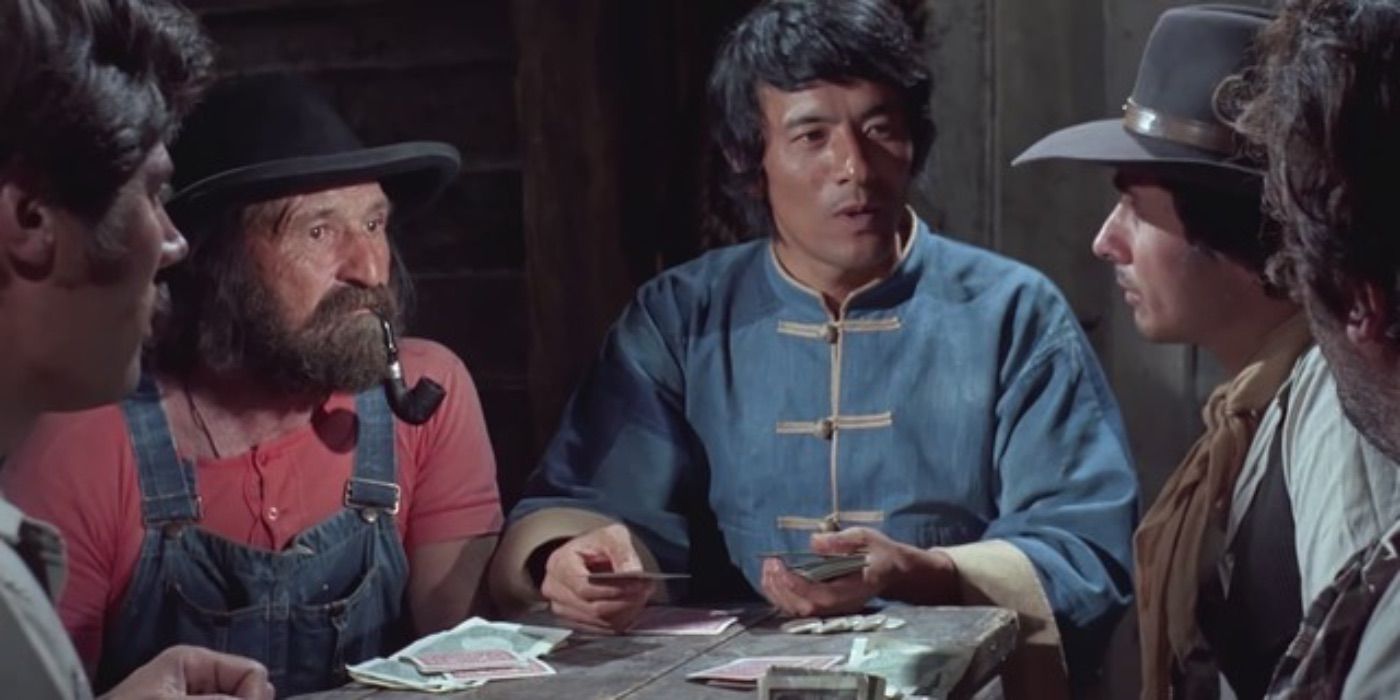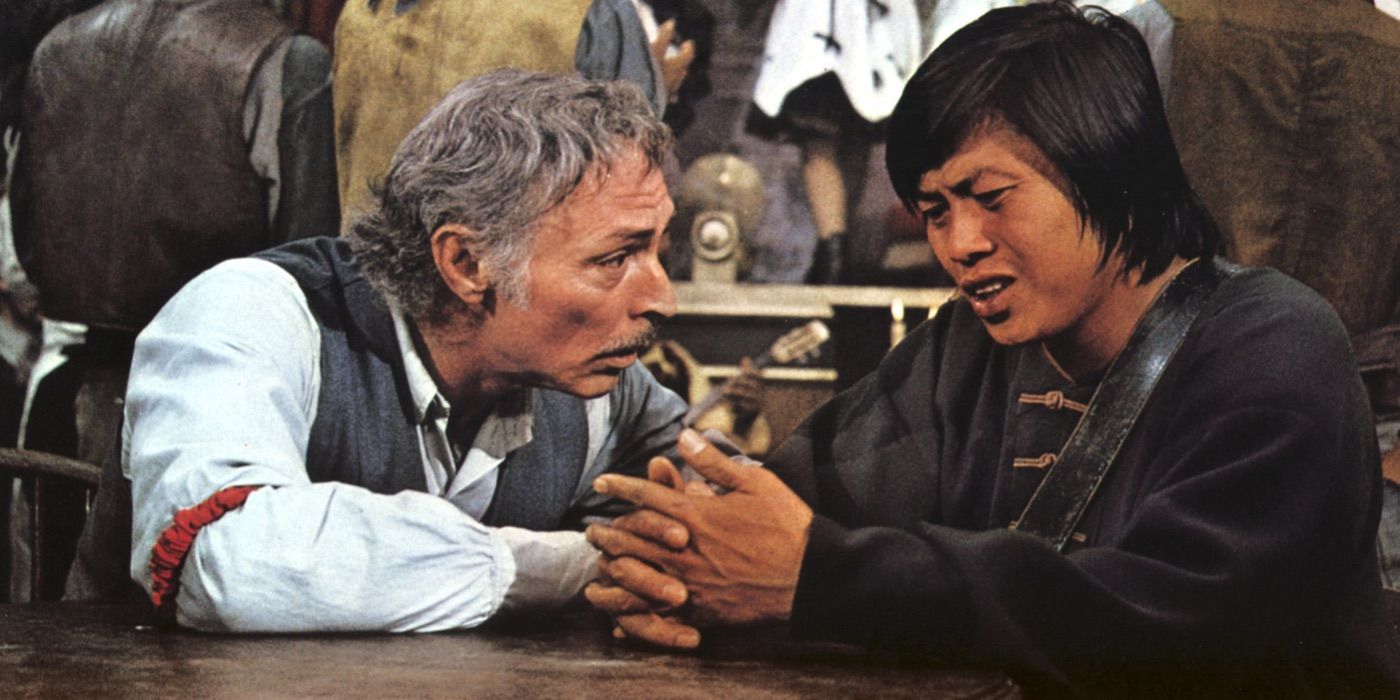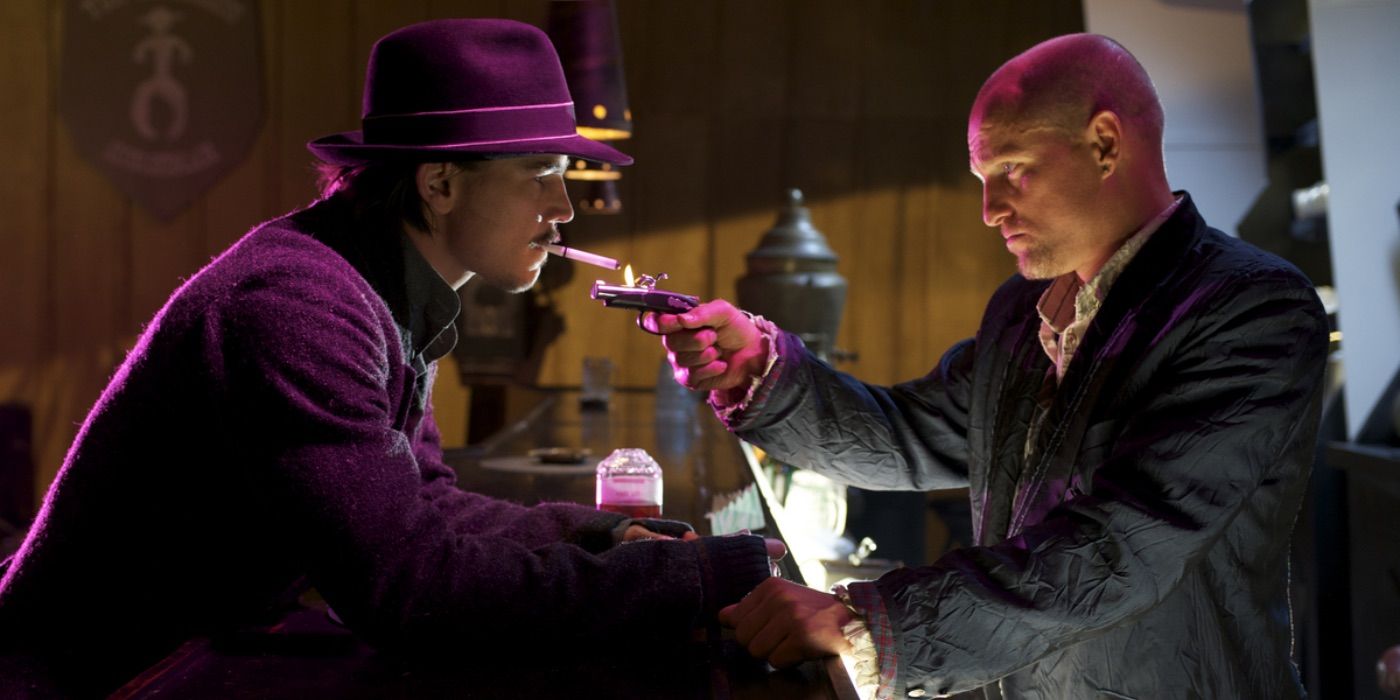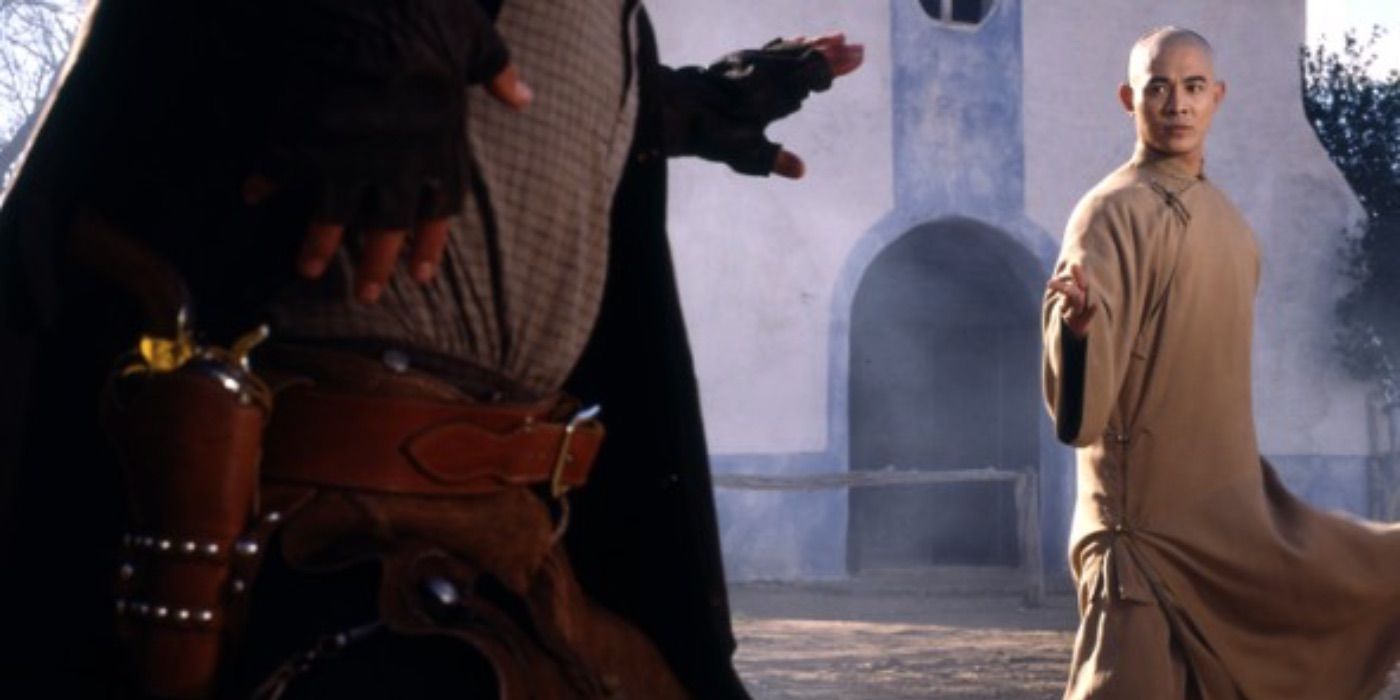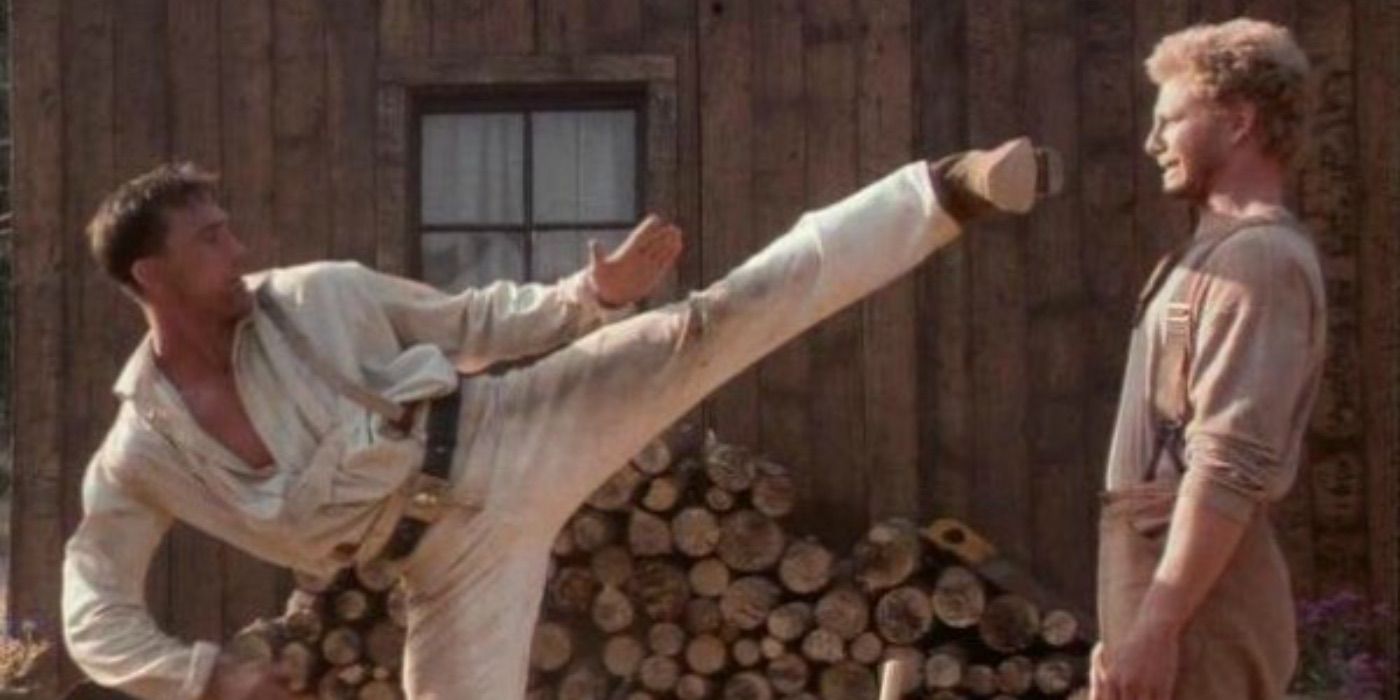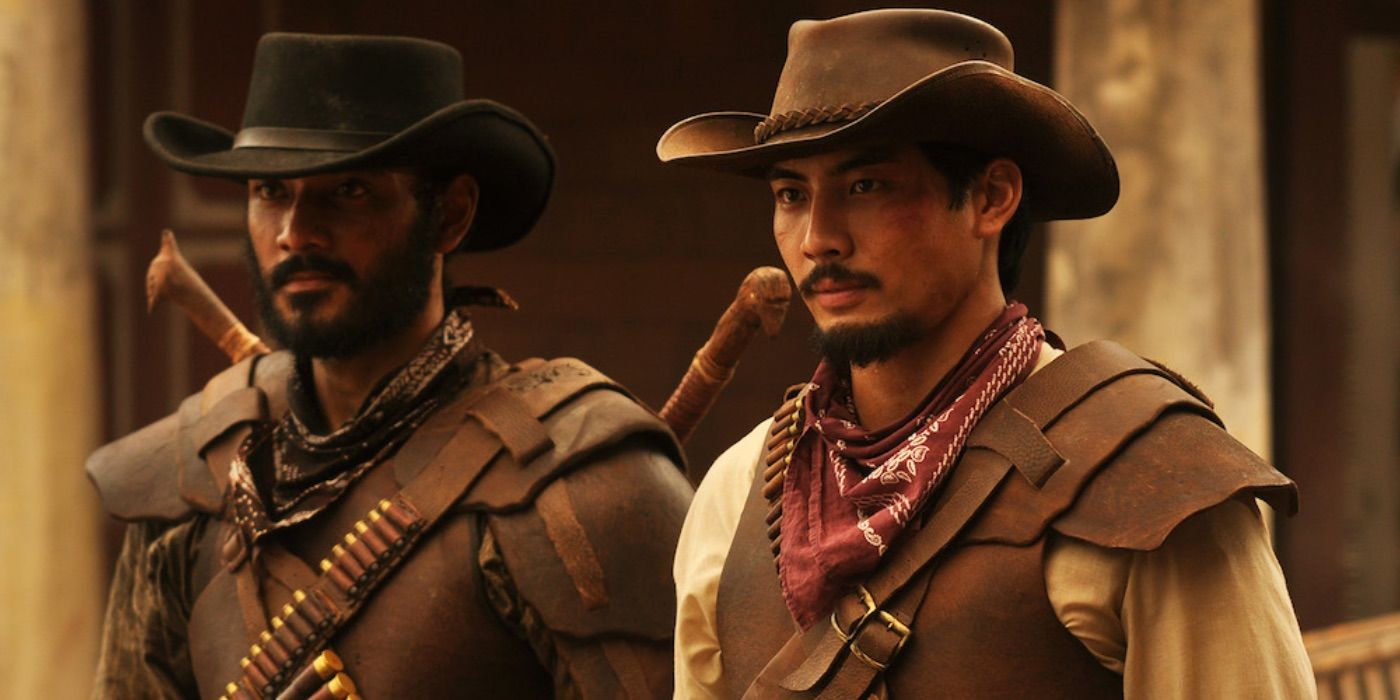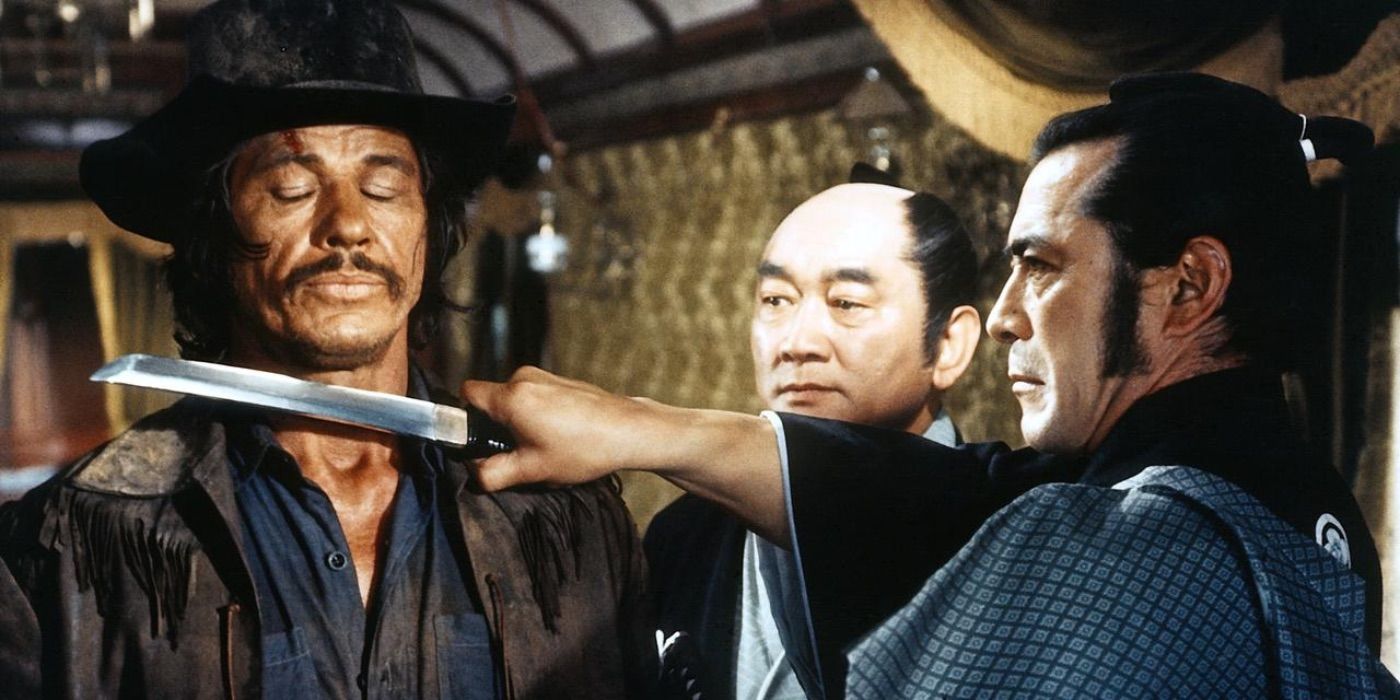Summary
- Martial arts movies often borrow elements of Westerns, highlighting the contrast between the Old World and the New.
- The incongruity between East and West is often portrayed humorously in martial arts Western comedies.
- Martial arts Westerns can examine racial stereotyping and cultural acceptance through the lens of action-packed stories.
For whatever reason, the Western genre has always gone hand in hand with martial arts. Some of the greatest martial arts movie stars of all time have made films in the Wild West, including Jackie Chan and Jet Li. These stories tend to focus on the implicit conflict between the traditional and the new way, as exemplified by the East and the West. Western movies explore the exciting time when American society was pushing into a new uncharted frontier, and this makes it a perfect backdrop for martial arts stories which can have themes of loyalty, justice and moral strength.
The incongruity between the East and West is often played for laughs in these movies, making them brilliant martial arts comedies. The mismatch between a gang of gun-toting bandits and an unarmed but highly skilled martial artist is a great source of humor. Martial arts Westerns have the opportunity to delve into the difficult reality of being a stranger in a new land. This doesn’t always have to be funny, and the culture clash can just as easily be used as a way to examine racial stereotyping. For these reasons and many more, plenty of martial arts movies take place in the Wild West.
10 Martial Arts Movies You Didn’t Realize Were Based On True Stories
Martial arts movies may often seen like showcase skills that are out of this world, but many are actually based on true stories and historical events.
10 Shanghai Noon (2000)
Jackie Chan and Owen Wilson team up to rescue a Chinese princess
Shanghai Noon is a perfect showcase for Jackie Chan’s blend of impressive martial arts and great physical comedy.
Shanghai Noon is a perfect showcase for Jackie Chan’s blend of impressive martial arts and great physical comedy. Owen Wilson makes a superb partner for Chan, and the film draws a lot of laughs out of their awkward alliance. Chan plays a highly skilled Imperial Guard and Wilson plays a low-life robber who knows the lay of the land. In this way, Shanghai Noon is the perfect blend of the Western and martial arts genres, with one stock character from each. Shanghai Knights came out in 2003, but a third Shanghai Noon movie never materialized.
9 The Warrior’s Way (2010)
Cowboys vs. ninjas with plenty of wire fu
After a warrior betrays his own clan by refusing to kill an innocent child, he flees halfway across the world to the American West. Eventually, his clansmen track him down, and he must unite with the townsfolk to defend the child against an army of ninjas. The Warrior’s Way is a raucously entertaining genre mashup with plenty of fantastical stunts and exaggerated kung fu. The climactic battle features gun-toting cowboys up against dozens of ninjas flying across the screen as if they can defy gravity. The wire-assisted kung fu is reminiscent of The Matrix or Crouching Tiger, Hidden Dragon.
8 The Fighting Fists Of Shanghai Joe (1973)
A Spaghetti Western with an egalitarian message
The Fighting Fists of Shanghai Joe is a Spaghetti Western about a Chinese martial artist who moves to Texas in search of a better life, but he is met with extreme racism from the locals. Shanghai Joe also discovers the horrors of slavery in the New World, and he gets on the wrong side of a fierce slave trader. The Fighting Fists of Shanghai Joe is a cathartic beat-down of narrow-minded bigotry. The film embraces the humor of its stereotypes, but its core message is one of acceptance and harmony.
The Fighting Fists of Shanghai Joe
has been known by various alternate titles including
To Kill or to Die
and
The Dragon Strikes Back.
7 The Stranger & The Gunfighter (1974)
East meets West in an unusual treasure hunt
The Stranger and the Gunfighter is another martial arts film in the Spaghetti Western genre. The film stars Lo Lieh and Lee Van Cleef as a martial artist and a gunslinger who must team up to recover some lost treasure. The bizarre twist is that the treasure map is split into four parts, with each section tattooed on the buttocks of a different woman. Despite this peculiarity, the film is mostly concerned with the battle between old and new, East and West, as the martial artist comes up against a vile team of bandits with six-shooters.
6 Bunraku (2010)
A stylized experimental action thriller
Bunraku features a samurai with no sword and a cowboy with no gun as they join forces to take down a gang of vicious killers. Woody Harrelson plays the mysterious bartender who brings the two together, and he acts as a prescient guide within the strange world of Bunraku. The film revels in its artifice, with some of the sets evidently made of paper or cardboard, and some of the action playing out in a jarringly inorganic manner. The name Bunraku is borrowed from a Japanese form of puppet theater, suggesting that the characters have no control over their fates.
5 Once Upon A Time In China & America (1997)
Jet Li’s martial arts series goes Stateside
The sixth and final instalment in the Once Upon a Time in China series follows Wong Fei-hung as he travels to California to visit one of his martial arts disciples. Jet Li is as entertaining as ever, putting his own spin on the Western movie tradition of raucous saloon fights. He is helped by the brilliant direction and martial arts choreography of Sammo Hung. It may not reach the heights of some of the earlier films in the series, but Once Upon a Time in China and America is still among Jet Li’s best movies.
4 Savate (1995)
French kickboxing in the Wild West
Savate is a form of French kickboxing, and Isaac Florentine’s 1995 Western attempts to tell the allegedly true story of the sport’s conception. The real origins of the sport probably lie a couple of decades earlier, but Savate isn’t overly concerned with historical accuracy. The story follows a French soldier who travels to a martial arts tournament in America to hunt down the man who killed his best friend. It’s a tale of survival and getting to grips with a foreign land, blending old-school Western tropes with a rarely depicted martial art.
3 Buffalo Boys (2018)
An Indonesian Western across two continents
Buffalo Boys doesn’t take place entirely in America, but even the parts of the story in Indonesia borrow heavily from the conventions of the Western genre. There are just as many saloon brawls and dirt road duels in Java as there are in the American West. The story follows two brothers who get embroiled in a small village’s struggles against Dutch colonialist settlers. They use their martial arts skills to fight back, as well as an entire arsenal of shotguns, bows, cannons and pistols. Buffalo Boys is breathless fun, but it also has an important anti-imperialist tone.
2 Red Sun (1971)
An outstanding international cast tussle for a golden samurai sword in the American West
Charles Bronson, Ursula Andress, Toshiro Mifune and Alain Delon make up an international star-studded cast in Red Sun, which tells the story of a group of train robbers who steal from the Japanese ambassador. Red Sun is mainly a samurai story in the American West, with Mifune’s character tracking down the bandits across an unfamiliar landscape. Red Sun features more gunfights than martial arts, but both are key ingredients in this eclectic East vs. West showdown. Mifune in particular is utterly captivating as an honor-bound samurai facing a gang of lawless reprobates.
1 Sukiyaki Western Django (2007)
A surreal blend of Japan and America
Suriyaki Western Django
is one of the best non-American Western movies, paying tribute to the genre with a distinctively Japanese twist.
Sukiyaki Western Django doesn’t exactly take place in the American West, but it doesn’t exactly take place in Japan either. The setting is a strange, fantastical amalgamation of the two. The film follows a stoic gunslinger caught in the crossfire between two warring clans. Suriyaki Western Django is one of the best non-American Western movies, paying tribute to the genre with a distinctively Japanese twist. The film is also famous for Quentin Tarantino’s cameo. Tarantino has made his own Westerns, and Sukiyaki Western Django allows him to live out a Clint Eastwood fantasy.
This story originally appeared on Screenrant


